Thor did not use a dysfunctional hammer
13.12.2020 | 14:52
I saw it coming: Me teaching the Norwegians some fundamental facts about the difference between a hammer and a cross.
In 1992 I wrote about the Icelandic artifacts for the catalogues of the Viking exhibitions in Paris, Berlin and Copenhagen in 1992 to 1993. The English version was entitled From Vikings to Crusaders. Among the artefacts from Iceland that I wrote about was as silver cross-shaped pendant from Foss in Iceland (see illustration at top of the article). 
The Huse-cross
To my best of knowledge, I was the first archaeologist to point out the obvious relationship between the cross from Foss (Hrunamannaafréttur, S-Iceland; Ţjms 6077) and a silver cross from Huse (Romedal, Hedmark/Innlandet fylke, Norway, C13216) Recently I became aware of a new find of a similar cross found at Nes in Ringsaker Kommune i Hedmark by a Danish metal detectorist, Ole Harpřth, (see article in Danish here) .

The Nes cross found by Ole Harpřth
Soon after the Kulturhistorisk Museum of the The University of Oslo informed me about still another cross found by a detectorist at Ven i Stange Kommune (C59393) of the same type as Mr. Harpřth´s metal-detector find and the cross from Huse.
The Ven-cross
Shortly thereafter learned that the Norwegian press has taken an interest in the hammer found by Ole Harpřth. But why calls something a hammer, when it looks like a cross?
I refuse to believe this growing group of now 4 cross-shaped artefacts are symbols for the Hammer of Thor. This is an obvious cross, with a cross-shaped opening in the middle (a diamond-shaped on the cross from Ven).
A hammer, where the handle protrudes over the socked hole (the eye) on top of the head of the hammer cannot be wedged (fixed). Such a cross-shaped hammer would plane and simple be dangerous to use. Every carpenter or smith knows that as a fact.
A Norse pre-Christian god like Thor (Ţór), best for his deeds from 13th century records, would certainly not have flown around in his goat-cart battering giants with a dysfunctional cross-shaped hammer, even if Ţór was gay like genderism has recently revealed. An expert hammer-hitter, gay, bisexual or straight, doesn´t use a hammer like that.
In any case other verified Thor´s hammer pendants (Ţórshamrar), which in the medieval Icelandic literature was called Mjölnir, have no similarities with the three cross-pendants found in Norway and the cross from Foss. However, the confusion is great and the assumption that hammer pendants found in Scandinavia symbolize Mjölnir has been a subject to great scholarly dispute. Some scholars did not fancy the idea that the hammer-shaped pendants symbolized the Hammer of Thor. However, in 2014 after the discovery of the the runic-Thor´s Hammer found in Křbelev on the Danish island of Lolland, there can hardly be more non-believers. It is so far the only pendant hammer-pendant bearing an inscription, which reads hmar x es = This is a hammer. Danish archaeologist Peter Pentz, of the National Museum in Copenhagen, in his well-known witty style, commented:
»Now we have it in writing, that what we believed were hammers in fact are hammers«.
Right on Peter!
 Mjölnir from Křbelev is a HAMMER.
Mjölnir from Křbelev is a HAMMER.
Unfortunately non of the four cross pendants of the Foss/Innlandets fylkeskommune type (from Foss / Huse, Ven and Nes) have a runic inscription which states they are crosses. But come-on! A cross shaped object with a cross-shaped opening through the crossing of the arms. Can it be less clear? Not even the carpenter´s son, Jesus, most often connected to a cross, would hardly have approved of a tool like the alleged cross shaped hammers of 19th Century Norwegian art-historians. Dear Norwegians you cannot turn a cross into a hammer like you made Leifur Eiríksson (Leif the lucky Ericson) and Snorri Sturluson into Norwegians. Or like the Danes put it so nicely: Lad os lige slĺ det fast én gang for alle, with a proper hammer.
The crucifix of Saint Peter from Rauđnefsstađir.The Crucifix was found by Icelandic poet and natural scientist, Jónas Hallgrímsson, in 1843. He donated it to the National Museum in Copenhagen, which turned it back to Iceland in 1930.
The archaeologists at the Cultural Section of Innlannet Fylke municipality (Kulturarvseksjonen ved Innlandet fylkeskommune) have as a preliminary assumption/suggestion pointed out that a simple lead cross pendant, found at Rauđnefsstađir in Rangárvallarsýsla, S-Iceland, is of the same type as the Foss/Innlandet cross-pendant type. This is incorrect. The crucifis (not a cross) from Rauđnefsstađir (wich by the way translates Rednose Farmstead) is a small, flat cross cast of lead and doesn´t have a cross-opening through the centre of the cross. Similar crosses have been found in Britain. However the crucifix-pendant from Rauđnefsstađir is cast showing a man hanging upside down, which allegedly was the horrible fate of Saint Peter when he was crucified in Rome. It is a Saint Peter´s Crucifix. Quite possibly the four crosses of the Foss/Innlandet type can also be a St. Peter´s Cross (in theory). They might possibly have been some kind of a Saint Peter´s Key, in fact the Keys to Heaven, in an early Scandinavian version.
Vilhjálmur Örn Vilhjalmsson Ph.D. is the author of all but one article on the blog Fornleifur.










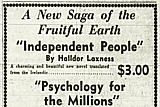
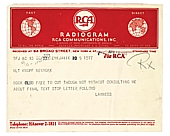





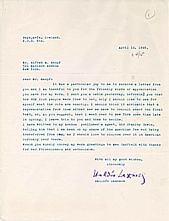















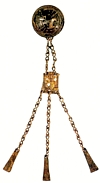












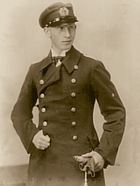

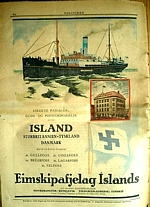






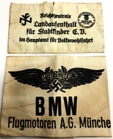













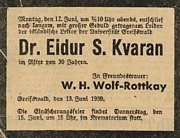



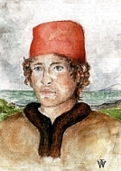
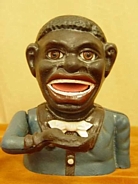




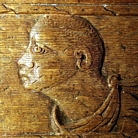




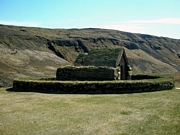
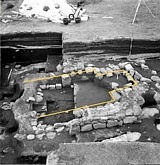



























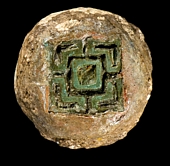
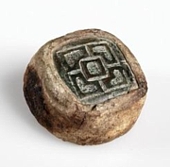


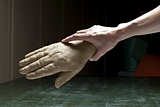





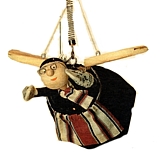










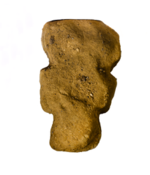




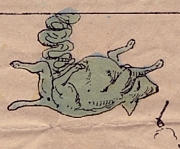





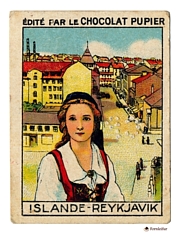





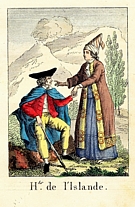


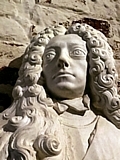
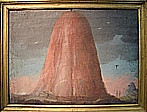
































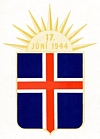










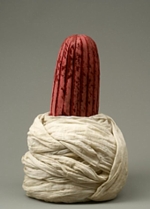
























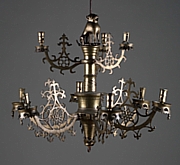











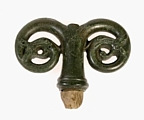











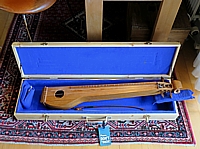







Athugasemdir
Hér er betri teikning af hamrinum frá Křbelev. Á hann er rist HMAR x ES , ţ.e. hamar es
FORNLEIFUR, 14.12.2020 kl. 17:09
Here is a better drawing of the hammer pendant from Křbelev. The legend is HMAR x ES, ie "hammer is"
FORNLEIFUR, 14.12.2020 kl. 17:11
Bćta viđ athugasemd [Innskráning]
Ekki er lengur hćgt ađ skrifa athugasemdir viđ fćrsluna, ţar sem tímamörk á athugasemdir eru liđin.